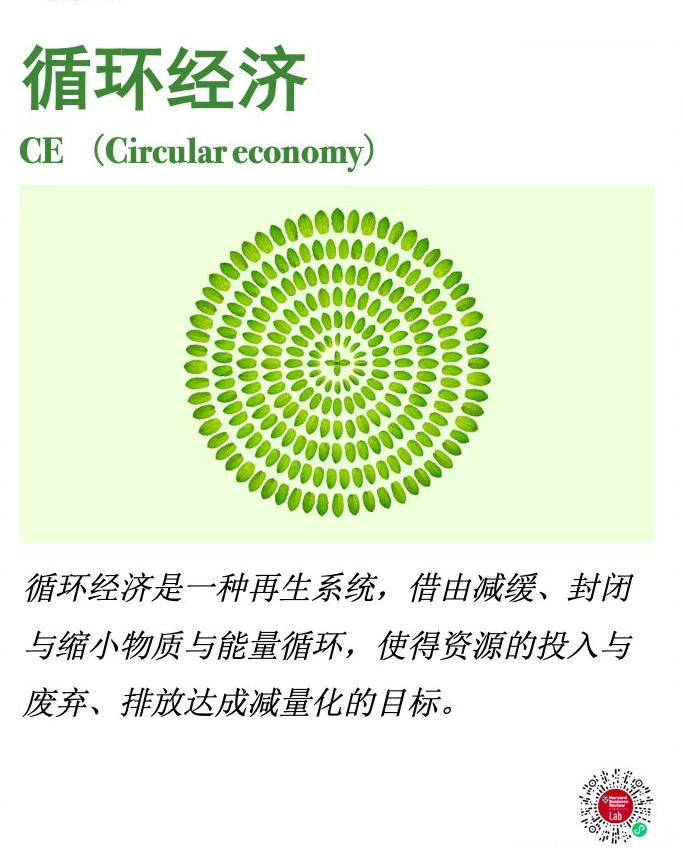
「释义」
循环经济是一种再生系统,借由减缓、封闭与缩小物质与能量循环,使得资源的投入与废弃、排放达成减量化的目标。
循环经济所想像的未来是所制造生产的每个产品都经过精心设计,并可用于多个循环来使用,不同的材料与生产制造的循环皆经过仔细考量搭配,如此一来,一个制程的输出始终可成为另一个制程的输入。在循环经济中,将是零排放、零废弃,所生产出的副产品或受损坏的产品或不再想用的货物并不会被看作是“废物”,而是可成为新的生产周期的原材料和素材。
「应用场景」
循环经济提出的理念基于三大核心原则:处理废物和污染,重复使用产品和材料,以及通过使用可再生材料和能源实现自然系统再生。它鼓励业界打破规则,从线性的“制造-使用-处理”传统方式转为更可持续的方式,使产品变得更耐用,能不断再修复、再制造、再利用,最终可被回收。为了优先确保资源的利用效益,循环经济的实行倾向于劳动密集型,这有助于改善就业并促进经济增长。例如,欧盟预估循环经济将新增70万个新工作岗位,将GDP提升0.5%。
CE presents an enticing idea based on three core principles: design out waste and pollution, keep products and materials in use, and regenerate natural systems by using renewable materials and energy. Industry is invited to rip up the rule book by moving away from the linear make-use-dispose tradition to an idealized and more sustainable approach where products are made more durable, continually repaired, remanufactured, reused, and finally recycled. The proposition is compelling: as CE endeavors tend to be labor intensive, and therefore aim to ensure resource efficiency, it is argued that their adoption will help to create employment and increase economic growth (for example, the EU estimates 700,000 new jobs and an increase in GDP of 0.5%).
以上文字选自 《哈佛商业评论》中文版2021年8月刊《“循环经济”四大局限性》 卢恩·范-瓦森霍夫(Luk N. Van Wassenhove) 纪伦·梅尔斯(Kieren Mayers)汤姆·戴维斯(Tom Davis)| 文 马冰仑 丨编辑




